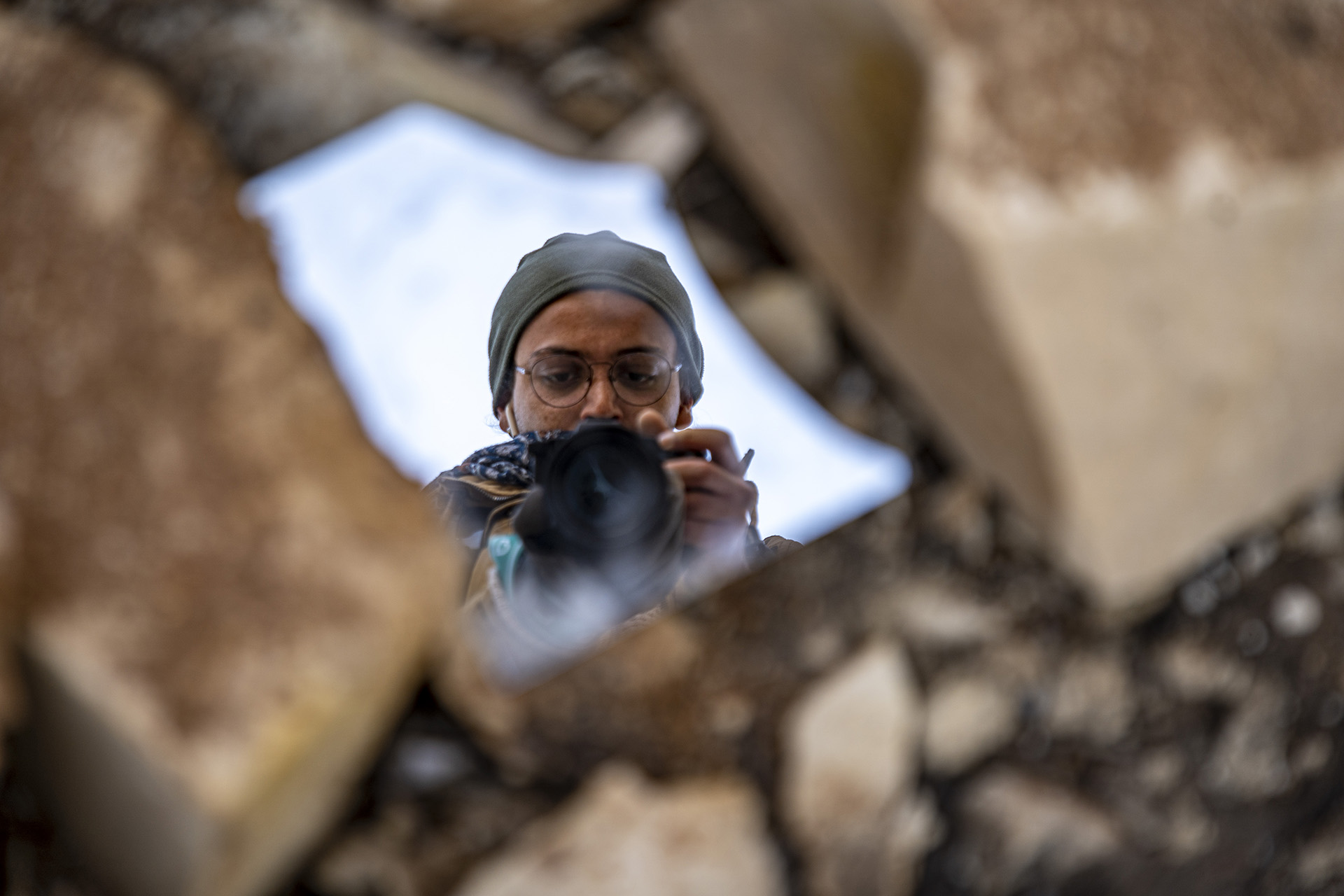“The way the floor began shaking under my feet made me think I was back in Syria,” photographer Abdulsalam Jarroud, 24, a Syrian refugee originally from Idlib, says of the moment a 7.8-magnitude earthquake hit the southern Turkish city of Gaziantep on 6 February. “It re-awakened traumatic memories I’ve been trying to forget.”
A second 7.5-magnitude earthquake followed hours later. Combined, they toppled thousands of buildings across 10 Turkish cities and left a trail of devastation across the border in northern Syria, already struggling through multiple crises due to the ongoing Syrian civil war.
As of 9 February, the death toll from the quakes had surpassed 20,000 across the two countries – a number expected to grow. Around 100,000 rescue workers from Türkiye and more than two dozen other countries are searching for survivors. But three days on, hope is fading fast. Already, the disaster is the deadliest earthquake in more than a decade.
Rescue and relief efforts are proceeding slowly due to winter weather, damage to roads and airports, truck shortages, and other logistical hurdles. Civilians in Türkiye told The New Humanitarian official assistance has been scarce: They say they have been left to fend for themselves through local, self-organised efforts to supply food, heating, and tents.
Turkish President Recep Tayyip Erdoğan has admitted shortcomings in his country’s response. “It is not possible to be prepared for such a disaster,” he said.
Meanwhile, providing humanitarian assistance to rebel-controlled northwest Syria as well as government-controlled parts of northern Syria is vexed by geopolitics and the pariah status of President Bashar al-Assad’s regime in the international community. It took three days for the first aid convoy to reach the rebel-controlled northwest.
For Jarroud and around half a million other refugees who have settled in Gaziantep in the nearly 12 years since the Syrian uprising-turned-civil war began, the earthquakes turned a city that had been a refuge into a place of compounding trauma. Every crumbled building, every helicopter sound, and every after-tremor reminds Jarroud of his life in Idlib. Much of his family still lives there, and they were also affected by the earthquake, but are fortunately safe.
In Gaziantep, the shattered buildings, omnipresence of death, and relief tents erected to house thousands of people who have been made homeless dredge up difficult memories for many more than just Jarroud. Since the first earthquake struck, he has been documenting the stories of people in Gaziantep who have lost their homes – many for the second time in their lives – as well as those scrambling to help each other, neighbourhood by neighbourhood, as outside aid continues to be delayed.
As he has worked, a deafening silence has hung over Gaziantep’s streets, semi-deserted as rescuers search as quietly as possible, listening intently for the voices of potential survivors.

Bakier Soulo (right), 28, and his younger brother sleep rough with their families in a public square in the old city of Gaziantep. As Syrian Turkmen from Aleppo, the brothers experienced the siege of their hometown in 2016, which prompted them to escape to Türkiye. Now, more than six years later, they have once again been rendered homeless after thinking they had found safety.

Dozens of white tents have been erected outside Gaziantep’s train station to host hundreds of Turks and Syrians whose homes were destroyed by the earthquakes. The makeshift camp was put up by the Turkish Ministry of Interior’s Disaster and Emergency Management Presidency (AFAD). Jarroud and other Syrians say the tents remind them of the camps for internally displaced people that are still scattered around Syria.

Mohammed al-Ali, a 75-year-old Syrian refugee originally from Aleppo, sits outside the Gaziantep train station, where he is now sleeping in a tent. The scenes in his adopted home remind him of what he experienced when Aleppo was being bombarded and put under siege in 2016. Household items left on tables; people sleeping in cars; people huddled together eating over mattresses and blankets on the floor; families with their few belongings collected in plastic bags: These are all things he has witnessed before. “I never thought I would see something like this twice in my life, at such an old age,” al-Ali said.

Ayşe Fatma Gülerim, 28, a Turkish social worker from the Ministry of Family and Social Affairs, is helping to assist the thousands of families affected by the quake in Gaziantep. She usually works in an office but decided to jump in and volunteer to offer hands-on help and emotional support. “I would’ve never expected to witness such a tragedy in my own country,” she said. “What I’ve seen over these few days look like images you would see on TV from a war-ravaged country.”

Excavators gingerly pick through the rubble of a collapsed building in central Gaziantep trying to find and extract people still believed to be alive. Families would normally come to this area of the city to walk and enjoy a good meal in a restaurant.

A faint light casts silhouettes of a child on the cellophane walls of a makeshift shelter put up by a family on a park bench in Gaziantep.
Words by Stefania D’Ignoti, photos by Abdulsalam Jarroud. Edited by Eric Reidy.







